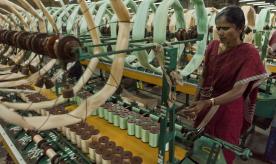Women, work, and the state: Service provision and female labour force
A significant puzzle regarding India's recent economic development is the country's declining rate of female labour force participation (FLFP). According to the International Labour Organization, FLFP in India dropped from 35% (1990) to 27% (2014). This has occurred despite the steady increase of per capita income, education, and urbanisation, while fertility rates are decreasing -- all conditions under which FLFP is expected to rise. Today, India has one of the largest gender gaps in labour force participation of any country in the world.
This project aims to understand the role of the state in shaping India’s low and declining FLFP rate. Governance and service delivery are critical determinants of how India navigates these challenges. Variation in citizens’ ability to access state benefits and services represents one of the most critical governance challenges in India today. Significant disparities in accessing the state have contributed to entrenched inequalities in opportunities, and our survey examines how this variation affects labour market behaviour.
While this survey probes both supply and demand factors that keep women out of the workplace, it retains a special focus on state capacity and service provision and their impact on labour market behaviour. We rely on a unique survey of 14,000 households located in urban clusters in four north Indian states: Bihar, Jharkhand, Madhya Pradesh, and Uttar Pradesh. Unlike many other surveys on this topic, ours explicitly captures intra-household differences by sampling both male and female respondents within the same household while carrying out a dedicated time-use module.





